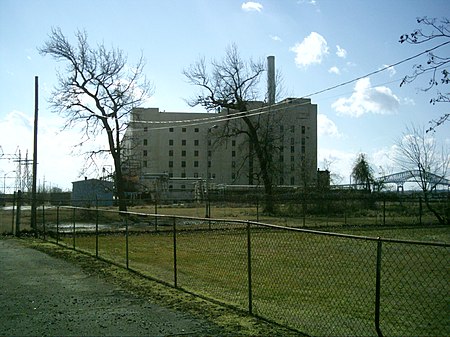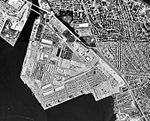Riverside Generating Station
1942 establishments in MarylandBuildings and structures in Baltimore County, MarylandDundalk, MarylandEnergy infrastructure completed in 1942Energy infrastructure completed in 1944 ... and 4 more
Energy infrastructure completed in 1948Energy infrastructure completed in 1951ExelonNatural gas-fired power stations in Maryland

The Riverside Generating Station is a 261 MW electric generating station operated by Exelon that is located at 4000 Broening Highway in Dundalk, Maryland. The station is on Sollers Point on the Patapsco River.
Excerpt from the Wikipedia article Riverside Generating Station (License: CC BY-SA 3.0, Authors, Images).Riverside Generating Station
Broening Highway, Dundalk
Geographical coordinates (GPS) Address Nearby Places Show on map
Geographical coordinates (GPS)
| Latitude | Longitude |
|---|---|
| N 39.238333333333 ° | E -76.515555555556 ° |
Address
Broening Highway 4010
21222 Dundalk
Maryland, United States
Open on Google Maps








